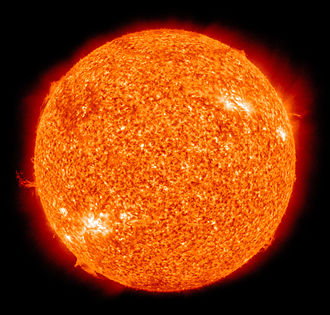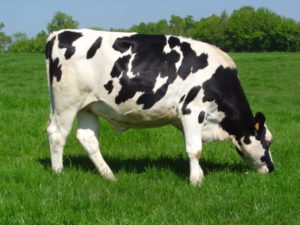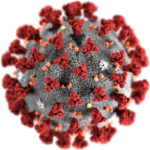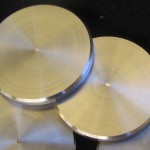If you’ve been exposed to the media over the past month, you might’ve heard of the latest emerging threat to humanity: corona virus. I personally am much more worried about Corona beer than this ‘new’ virus, as I believe people who consume too much alcohol are much more likely to cause me harm than this latest viral menace.
Corona virus casualties are mostly among people who are already vulnerable – advanced age, immunocompromised, etc. If years past is any indication, we can expect this latest super-virus to fizzle out, just like Swine Flu and SARS and MERS.

Seasonal virus outbreaks are seasonal because of the Sun’s influence in promoting better health. Human skin produces Vitamin-D when exposed to ultraviolet radiation. Red light therapy refreshes the copper enzyme in our mitochondria, thereby allowing our metabolism to work better. When the sun goes away for the winter our vitamin D levels go down and our mitochondria become less efficient, thereby making people more vulnerable to viruses. Supplemental light — as UV light, and as Red Light (as a heat lamp or LED, either work) — can make a big difference for improving people’s health in the winter months.
The CDC has a page about Coronaviruses and COVID-19:
Coronaviruses are a large family of viruses that are common in many different species of animals, including camels, cattle, cats, and bats. Rarely, animal coronaviruses can infect people and then spread between people such as with MERS-CoV, SARS-CoV, and now with this new virus (named SARS-CoV-2).
The SARS-CoV-2 virus is a betacoronavirus, like MERS-CoV and SARS-CoV. All three of these viruses have their origins in bats. The sequences from U.S. patients are similar to the one that China initially posted, suggesting a likely single, recent emergence of this virus from an animal reservoir.
[… blah, blah, blah]
Center for Disease Control – Coronavirus Disease 2019 (COVID-19) Situation Summary
Treatments for Corona virus aren’t so different than treatments for the flu. The A.R.E. has this page about Cayce’s recommendations for the flu: Cayce Health Database: Overview of Respiratory Flu
This year, as every year, cases of the Flu is much greater problem than Corona Viruses:
COVID-19: Approximately 84,119 cases worldwide; 62 cases in the U.S. as of Feb. 28, 2020.
Flu: Estimated 1 billion cases worldwide; 9.3 million to 45 million cases in the U.S. per year.
https://www.hopkinsmedicine.org/health/conditions-and-diseases/coronavirus/coronavirus-disease-2019-vs-the-flu
If you’re on a budget, the cheapest foods that can help fortify your health against winter sickness are milk and orange juice. Orange juice is a good source of potassium, sugar and vitamin C. Synthetic vitamin C uses heavy metals to produce the end product of ascorbic acid. There’s a little vitamin C in milk too. The only people who really need a vitamin C supplement are those who are living on a diet of ramen noodles, and even then it’s much better to buy a lemon or lime than a pill.

I was initially led to believe that Edgar Cayce only recommended milk ‘with the heat of the cow’ (implying fresh raw milk, not refrigerated raw milk), but there are other readings where Cayce recommended dairy without this qualification. Organic milk has more vitamin A than mass-produced milks (visible as a slight orange tint), but all things considered even cheap milk is a generally-healthy food, because sick/malnourished cows don’t produce milk.
Dairy is a complete food, and a good source of calcium and potassium, protein, vitamins and trace minerals (including iodine). The only nutrient it lacks in quantity is iron, but in the modern world most people get too much iron anyways. Reduced fat milk has to be fortified with Vitamin A and Vitamin D. Some people can’t use certain milk products, usually on account of the cow’s diet. Switching brands might help.
Greek yogurts are slightly better than less-strained yogurts. A little honey/sugar is okay to use with yogurt, to help your liver with converting the yogurt’s lactic acid back into sugar.
I realized years ago that a cheap cheese I’d been buying was causing itchy areas on my legs. I stopped eating cheap cheese and the itchies went away. This probably had something to do with the “vegetable enzymes” – old fashioned cheese makers used Rennet as a source of these enzymes. (Rennet is animal-sourced. By using ‘vegetable enzymes’ cheese makers can make their products acceptable to lacto-vegetarians, and reduce their costs, but the end product is not as good as properly-made cheese.)
If you aren’t interested in dairy products, vegetable broths can also be useful for getting adequate minerals. Broths aren’t nearly as concentrated or convenient as dairy, but it’s an option.
On account of the Coronavirus fearmongering, I’m offering free shipping on my grounding coins for the month of March 2020 – use the coupon code ‘freeshipping’ in checkout for $4 off (Coins are $7 each, U.S. shipping is $3.50). Energetic grounding can help people with chronic sinus problems. Not everyone needs to improve their body’s grounding, but those who do ‘instantly’ notice the grounding coin’s effects.
I’ve also written a new report about other simple interventions that can make a big difference for fortifying your health against wimpy viruses, including how to get some of the supplies you might want to have on hand for less than half the price of the A.R.E.’s “official supplier”. I’ll also include what else was going on in the early 20th century that contributed to the “Spanish Flu” and “Polio” epidemics. These factoids may be relevant for helping protect yourself from other wimpy viruses.
(Disclaimer: link to the Red Light Man’s site above is an affiliate link)

